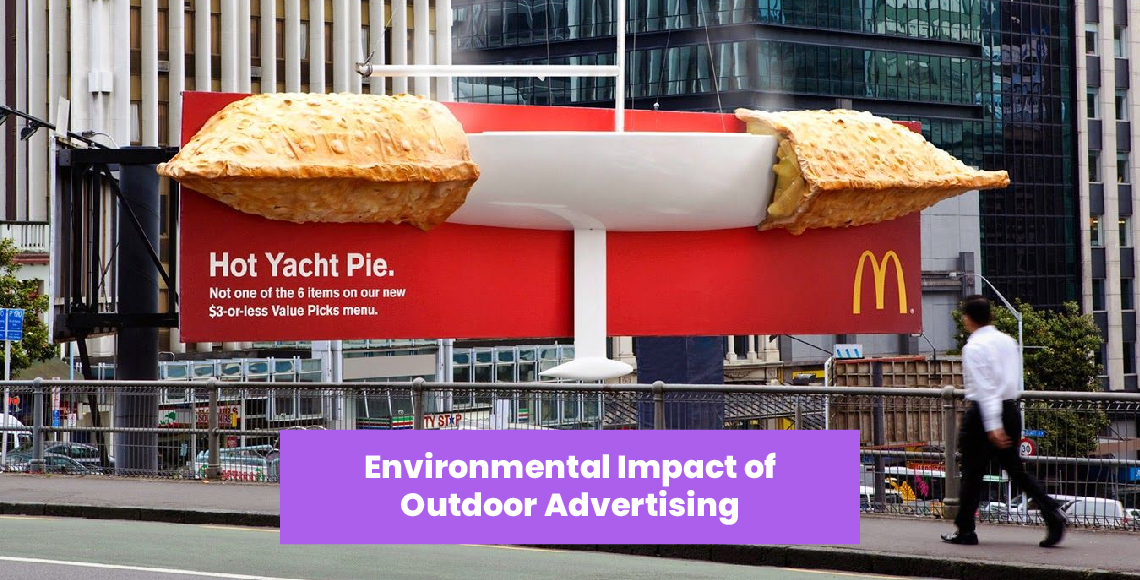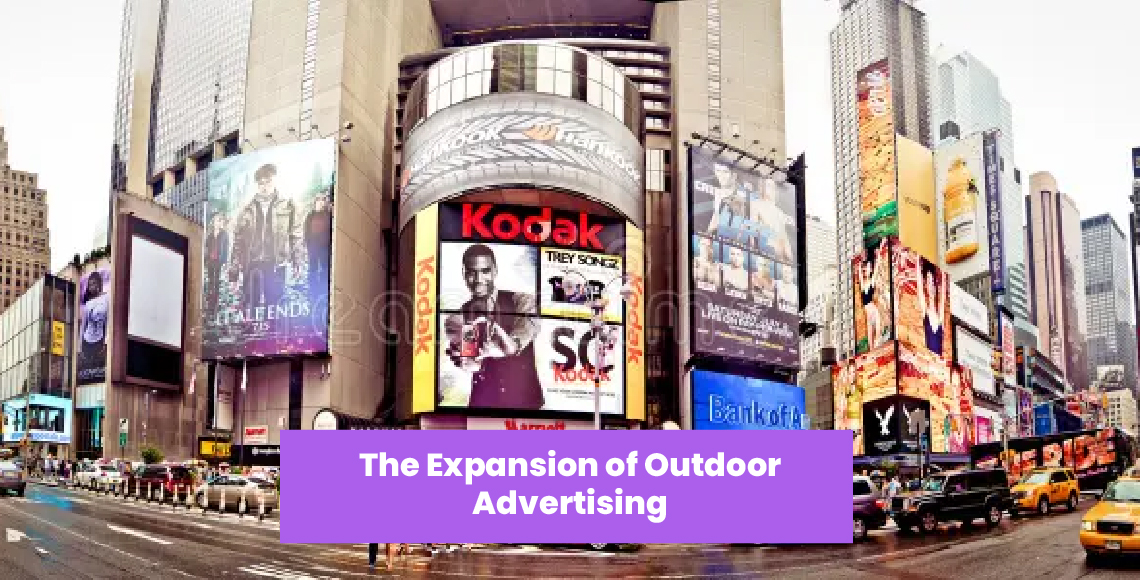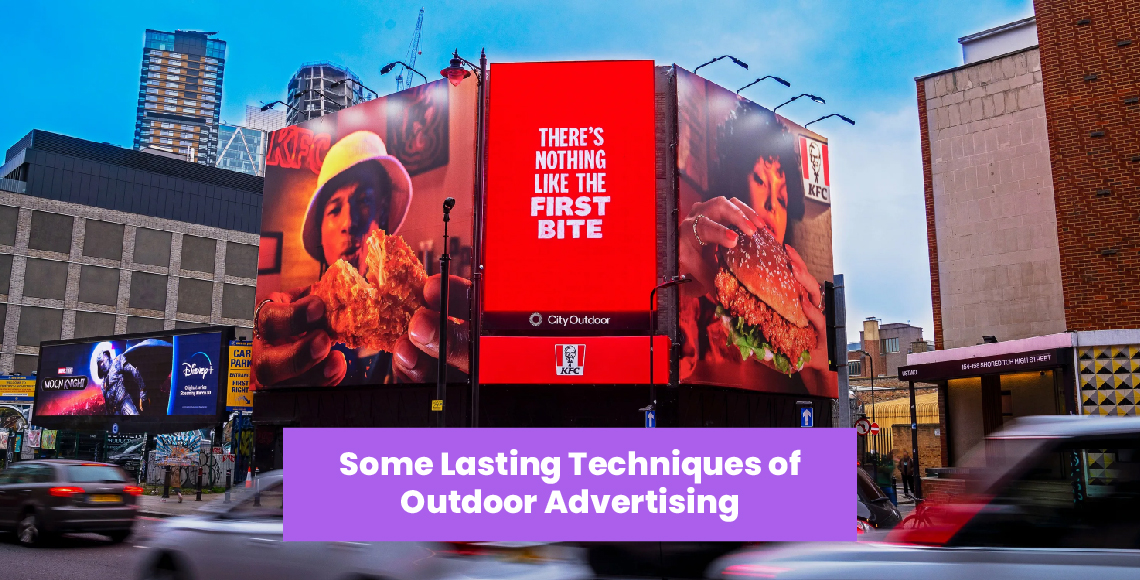
Environmental Impact of Outdoor Advertising
Outdoor advertising has become an essential component of marketing plans for businesses of all kinds.
However, while we attempt to attract the attention of our target audience with eye-catching billboards, banners, and signage, we must consider the environmental effect of outdoor advertising.
This article investigates the environmental implications of outdoor advertising and investigates sustainable strategies that might be used to reduce its ecological footprint.
The Expansion of Outdoor Advertising

Outdoor advertising, also known as out-of-home (OOH) advertising, includes a variety of mediums such as billboards, transit ads, street furniture displays, and more.
As cities mature, these advertising platforms have grown in popularity owing to their capacity to reach a big audience, increase brand awareness, and reinforce marketing messaging.
Environmental Risks
However, the expansion of outdoor advertising generates several environmental problems that must be addressed. Among the major considerations are:
1. Utilization of Energy
Illuminated billboards and digital displays utilize a lot of energy, which adds to greenhouse gas emissions and power usage.
2. Pollution in the Visual Field
The growing number of billboards and ads can cause visual clutter, reducing the aesthetic attractiveness of both urban and natural settings.
3. Waste Creation
Advertising materials, such as vinyl, paper, and other non-biodegradable materials, contribute to trash formation during manufacture and installation.
4. Chemical Exposition
Chemicals used in printing and coating outdoor advertising items have been shown to have negative impacts on soil and water quality, potentially affecting ecosystems.
Some Lasting Techniques of Outdoor Advertising

Companies may implement many sustainable methods to address these environmental problems and encourage responsible outdoor advertising:
1. Energy-Saving Lighting
Energy usage and greenhouse gas emissions may be greatly reduced by switching to energy-efficient LED lighting for lighted displays.
2. Resources That Can Be Recycled
To reduce waste, choose recyclable and biodegradable materials for banners, billboards, and other advertising media.
3. Digital Creativity
Accept digital advertising networks that allow for dynamic content updates, which reduces the need for physical replacements and waste.
4. Picking a Location
Choose advertising places intelligently to prevent overpowering natural landscapes and to maintain urban visual harmony.
5. Employing local plants
Integrate natural plants and greenery around advertising buildings to reduce visual pollution while also benefiting the surrounding ecology.
6. Community Participation
Involve local communities and stakeholders in outdoor advertising installation decision-making to ensure their concerns and desires are taken into account.
Sustainable Outdoor Advertising

Some businesses have adopted an unconventional approach, including vertical gardens within advertising buildings, which improves aesthetically while also giving environmental advantages.
The following examples demonstrate the various ways in which businesses may combine outdoor advertising with environmentally friendly practices.
Businesses may effectively advertise their brand while also making a good contribution to the environment and society as a whole by embracing these new ways.
Here are a couple of such examples:
1- Solar-Powered Billboards
Solar panels integrated into billboard constructions allow them to produce their electricity from the sunshine.
This environmentally friendly approach minimizes dependency on traditional energy sources, cutting both operational costs and carbon emissions.
2- Advertising Structures with Green Roofs
Some businesses have converted the top surfaces of their advertising installations into vegetated green roofs.
This method improves the visual attractiveness of the property, decreases heat island effects, absorbs rainfall, and offers a home for local species.
3- Vertical Gardens & Living Walls
Living walls and vertical plants in advertising constructions not only show commercial messages but also contribute to urban vegetation and air quality.
Plants are used in these installations to produce an aesthetically appealing and ecologically responsible appearance.
4- Displays that are responsive & dynamic
Physical replacements of static ads can be reduced by using digital screens with interactive and dynamic information.
This technology enables real-time updates and modifications, reducing the waste associated with traditional advertising approaches.
5- Message-In-Art Installations
Companies can develop artistic installations that send a message about sustainability or environmental consciousness instead of standard commercial advertising.
These works are designed to engage the public while also promoting good ideals.
6- Recycled Materials
Advertising materials made from recycled or repurposed materials show a commitment to sustainability. Outdoor advertising may be considerably reduced in its environmental effect by using recovered wood, recycled metals, or reused textiles.
7- Motion-Activated Displays
Some creative outdoor displays employ kinetic energy generated by human or vehicle movement to power lights or interactive components. This technique uses current energy instead of requiring new power sources.
8- Sustainable Inks & Printing
Using environmentally friendly inks and printing technologies for outdoor ads decreases the usage of dangerous chemicals while also having a low impact on air and water quality.
9- Targeted Advertising Campaigns
Localized advertising campaigns decrease the need for large-scale installations, reducing visual pollution and waste while efficiently addressing targeted audiences.
10- Mobile Advertising Vehicles
Mobile advertising vehicles (electric or hybrid) outfitted with LED screens may transmit messages while on the go, as opposed to static installations. These trucks may be strategically deployed in high-traffic locations, eliminating the need for permanent installations.
Conclusion
As the advertising landscape evolves, firms must consider the environmental effect of their marketing initiatives.
Sustainable outdoor advertising strategies not only reduce environmental impact but also indicate a commitment to business responsibility.
Companies may find a balance between effective marketing and environmental preservation by embracing energy-efficient technology, recyclable materials, and community participation.
As customers grow more environmentally sensitive, such measures can help to boost brand impression and long-term profitability.
Royal Vision Media For Lasting Success!
As Royal Vision Media is a leading marketing agency that combines creativity and environmental care, can help you unleash the power of sustainable advertising.
Increase the exposure of your business while having a good influence on the environment.
Contact us and Join us in changing advertising’s future. Let us all work together to achieve renown!



